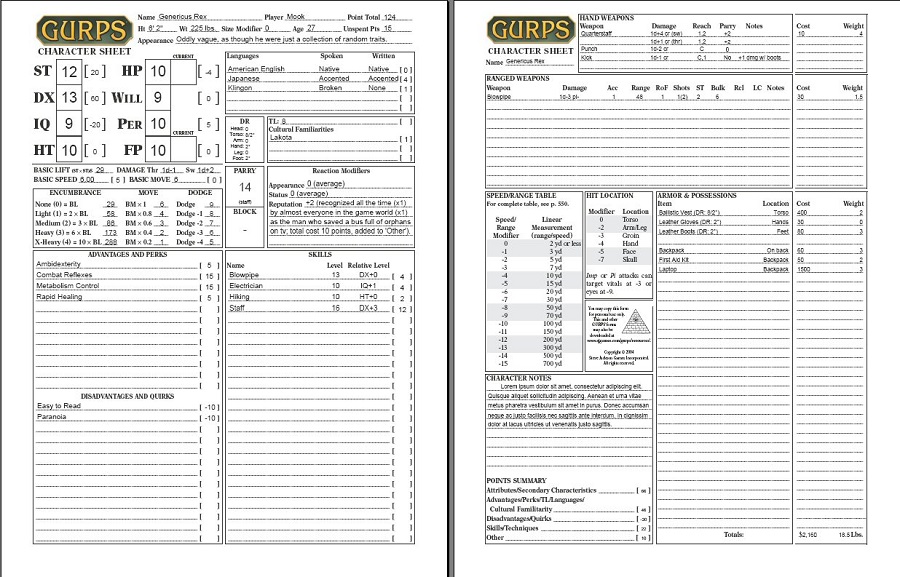

If you're looking for a recommendation, that's easy. 45 and a battleaxe have approximately the same effect.

But suffice it to say, in GURPS you'll never have that problem where a. And the vast majority of 3rd edition material can be used with 4th.ģrd Edition had a solid implementation of variable damage types - Crushing, Cutting, and Impaling.Ĥth Edition damage has been expanded to include even more types, whose effects and even names escape me at the moment. The support library for 4th Edition is smaller, but characteristically excellent.

At the very least, you needed the Basic Set and the two Compendia.Ĥth Edition has all the base rules in just the two Basic Set books - Characters and Campaigns. But that meant that rules were scattered all over those books. Usually, the fixes are integrations of rules that saw years of use and testing under 3rd edition.ģrd Edition also had a huge library of support books. Intelligent characters tended to be able to avoid the effects of mental disadvantages with ease.Ĥth Edition addresses those and similar issues.It was impossible to have an intelligent character that spoke a foreign language badly.Probably the most talked about were IQ-related. I'm going to limit my answers to the differences between 3rd and 4th editions, because I assume those are the ones you're really asking about.ģrd Edition had hit points were based on Health, fatigue based on Strength.ģrd Edition attributes were all purchased on the same graduated scale of point costs that made mid-range scores cheap, and high-range scores expensive.Ĥth Edition attributes are purchased on two separate scales (one for, IIRC, DX and IQ the other for ST and HT) with constant steps between scores.ģrd Edition was a very solid edition, but had certain problems. They all feature 4 character attributes:Īll are built to handle any genre, any character, and any situation you can come up with. They all have combat that scales from basic and abstract to advanced and tactical. They all have an extensive collections of Advantages, Disadvantages, and Skills. They all feature 3d6 roll-under task resolution. They're all point-buy character creation systems devoid of classes and levels. The core of the system has stayed the same. I deliberately didn't phrase this as a system-recommendation question for that reason (though recommendations are not an unwelcome bonus!).įirst of all, let me address an important fact: I'm hoping that this question will be generally useful for people wondering about the differences between editions, not just useful for my particular situation. Having no prior experience with GURPS, I'd like to know a bit more about the history of the editions and the changes they've introduced before I invest in a particular edition's books. I'm likely to use GURPS 4th edition since that's the most recently-published edition, but I'm not shy about using older editions of games if they suit my tastes better. GURPS looks like it can handle anything the group could possibly create during the Microscope session.

The recent spate of GURPS questions have piqued my curiosity, and the system looks like it would suit a campaign I'm planning that would start with a world-generation session using a game of Microscope. What are the significant differences between GURPS 4th edition and earlier editions?


 0 kommentar(er)
0 kommentar(er)
